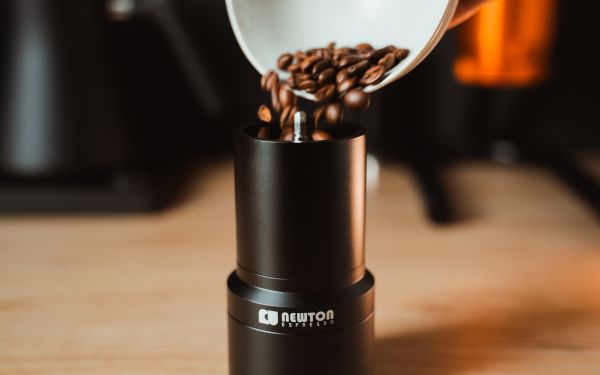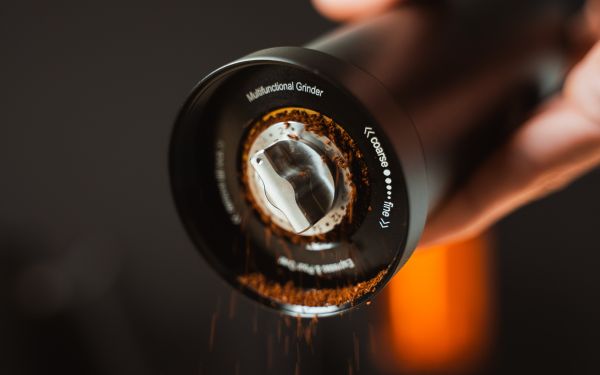How to Grind Coffee for Manual Espresso
Freshly ground coffee from a quality grinder is the key to great espresso, or any coffee for that matter!
There are a few key elements that are essentially unconditional in the pursuit of espresso. Quality water, coffee, espresso equipment and the grinder. Today we will be looking at the latter
Often overlooked, your grinder is the key to unlocking the flavours in your beans. Our goal here is to dive a little deeper into grinders, why a quality grinder is so important, how to use them properly and how to pick the right grinder for your needs.
Regardless of your level of coffee knowledge, this post will be informative and help you understand things a little better. Enjoy!
Why is grinding fresh important?
Fresh is best, we hear it all the time. Yet why is this the case with coffee? Coffee beans have key flavour compounds and gases trapped within them, a lot of these coming from the process of roasting. These compounds are not trapped inside forever, in time these will escape from the pores of a whole coffee bean.
Once we grind coffee we increase its surface area exponentially. In doing this we release these trapped compounds and gases to the outside world. Once this has occurred, the coffee will stay fresh for a very limited time. For this reason we always recommend grinding your coffee when you intend on using it, instead of buying it pre-ground from a cafe or roastery.
Grind Size…Finer, Courser, when to change it and how?
If you have been buying pre-ground coffee, you may notice that your coffee comes out too slow, or alternatively too fast. This is when we need to adjust our grind size, to create the right amount of resistance. With manual espresso, the general rule is, you will need a finer grind size than traditional espresso.
If you have been buying pre-ground “espresso grind” coffee and noticed a lack of resistance on your BRUA lever… now you know why!
The easiest way to think of grind size and its effect on your coffee, is to think of a sieve with rocks and a sieve with sand. If you took two identical sieves, fill one with rocks and pack it down and one with sand and pack it down, then pour water from a watering can over the top, the water will take far longer to flow through the sand because the gaps between the particles are much smaller. The coffee in your basket works exactly the same just on a smaller scale.
When we want to slow down the extraction, we grind finer and when we want to pass the water through more quickly, we grind coarser.
Dialling in the grind on your BRUA
The above has given some insight into how important your grinder and grind size are to the final cup. We can now learn exactly how to get it right.
The first thing we want to do is fix our dose of coffee. Keeping this consistent with every shot will make finding the right grind size much easier. The BRUA's basket is designed to hold between 16-18g of coffee and I usually weigh 17g for a great extraction. If you need digital scales to help with this, you can find them here.
- Measure 17g of coffee and grind. (Depending on your style of grinder, you may weigh before you grind or weigh the ground coffee).
- Using the basket holding ring as a funnel, pour grinds into the basket and distribute with your chosen technique. (WDT is the best method)
- Tamp grinds until you feel the resistance from the coffee. (You don't need to go overboard with pressure, find what is comfortable and repeatable for you, 10-15kgs of pressure is plenty).
- Pull a shot of espresso with your desired technique. If it comes out without much resistance, grind finer and repeat all steps the same. If you find it too hard to extract or it tastes bitter, hollow and dry, grind coarser and repeat.
- Once you have found your acceptable range, the coffee is tasting good, take note of the grind size. You will find only small adjustments are necessary over time to keep it tasting great.
Tips and Tricks to the dial in.
Part of the dial-in process is experience. This is the fun part and you will naturally get better and quicker at the whole process with time. These tips will hopefully get you there a bit quicker, or help you out when you are stuck.
Taste your shots, this is the absolute best indicator.
If it tastes sour, thin and finishes quickly, you probably haven't extracted enough from your coffee (under extraction), this means you want to slow things down. Fine up your grind size and give it another go.
If it's tasting thick, dry, bitter and grainy, you are extracting too much (over extraction). Bring your grind size courser by a couple steps and try again.
It's easier to start courser and dial in finer. It's much easier to dial in your grind with a course setting and move it finer until you are happy. Keep going fine until you taste bitterness, then bring it back one step courser, this is probably the sweet spot for the coffee you are using.
Small adjustments are key, unless your grinder is really really far out, just make small adjustments and take note of the results, it's hard to keep track when you move too far at once.
I don't like giving extraction times as every coffee is different. However with the BRUA, a general rule is press down about a ¼ of the way, until you have some pressure and let it preinfuse here for 10 seconds, increase pressure at pull between 30-35g of yield in a window of 50 sec -1:10. To perfect it from here, taste and use the above tips to adjust.
What grinder should I buy?
Different grinders suit different people, be that for portability, workflow or budget. Luckily Newton Espresso has you covered on some great options.
Hand grinders will always give you the best bang for your buck, no question. The downside, they can be a little labour intensive for some, especially for espresso.
If you are after something that gives you the freedom to travel with your setup, but still have the luxury of power, you can't go past the Newton Hybrid USB grinder.
I recently started using this piece of equipment, and I can't stop going on about how much I love it. It's quiet and simple to use, you get plenty of cups out of one charge and because the motor is low rpm and remains at a consistent speed,the grind consistency compared to a hand crank is superb.
The fact it also comes with a hand crank in case it runs flat is an added bonus and gives me peace of mind when we take it travelling or camping. It needs to be said that this definitely doesn't grind fast, but I have found no issue with this. Weigh out your dose and let it do its thing in the background, while you set up your BRUA and start the preheat process, it all comes together seamlessly in the end.
For the budget conscious, or old school, the two hand grinder options offered by Newton will have you pulling tasty shots in no time, just remember some elbow grease is required for espresso. It's really not as bad as it seems once the grinder is dialled as we described above.
If your setup remains at home, you have the bench space and the budget, or you just don't like the idea of hand grinding, there are plenty of powered options.
The Varia VS3 is great value and one of the best entry level single dose grinders on the market. Bonus points it looks sleek and fits well with the BRUA.
If you prefer a hopper style grinder, Eureka makes some really nice traditional options to round out the setup.
The list here is endless, the big piece of advice is do your research, take time choosing what suits you regarding price, size, coffee brew style you need it for, how automated you need it, style, etc..
Single Dosing your grinds how and why?
Single dosing your grinds isn't a necessity, but if you are already going the route of manual espresso and want to get the most out of your coffee in the pursuit of perfection, we highly recommend it. It can seem daunting and labour intensive at first. Trust me, it really is the simplest method, makes dialling-in quick and easy with less waste and keeps your coffee fresh for longer (we even do it this way in cafes for our upmarket offerings).
Weigh up roughly however many doses you require for the day at 17g like described above, place them in containers. This now means you are ready to go for the day, obviously you can always dose up more if needed. Then simply dial your grind in following the steps above. Once that's right, all you need to concentrate on is weighing your yield and the extraction itself.
We love hearing from you all, the good, bad and the ugly. What's working for you? What grinder do you love? Or do you need more help with this? If you are stuck on a certain part, reach out, we are always here to help you get that perfect espresso!
Until next time….
Lars and the team.










